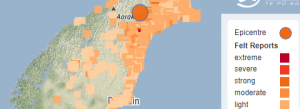Researchers said on Thursday that one traveller isolated for COVID-19 in a New Zealand quarantine facility infected several people in a group across the hallway, thereby demonstrating the spread of the virus and the efficacy of vaccines.
The isolated patients were required to abide by strict protocols, which prevented them from leaving their rooms, or opening the doors of more than one room at the same time. However, lapses did happen and CCTV camera footage showed evidence of simultaneous door opening when the first traveller had been infected.
These incidents led to the infections among the other people across the hallway via airborne transmission of the coronavirus, the researchers claimed, after examining the available evidence using genetic sequencing.
Also read | Cloth masks a big no in the fight against omicron: Health experts
In a study published in the journal Emerging Infectious Diseases, Andrew Fox-Lewis of the Counties Manukau District Health Board in Auckland and his colleagues, wrote about their findings, saying “Our findings support the hypothesis that during episodes of simultaneous door-opening, airborne particles in the room of person A rapidly diffused down a concentration gradient, across the corridor, and into the rooms of group BCDEF.”
Reportedly, only person who was fully vaccinated did not get infected despite staying in a room with four other COVID-positive patients for several weeks. Describing their findings, the team wrote, “Despite sharing a room with four other persons with PCR-confirmed SARS-CoV-2 infection, person F never tested positive for SARS-CoV-2 by (PCR test), testing negative on July 14, 18, 21, 27, 29, 31, and August 8, 14, 16, and 23.”
The person who escaped infection had been inoculated against COVID-19 with two doses of the Pfizer-BioNTech vaccine, but the team reported that none of the others were vaccinated.
Similar findings had also been reported by Hong Kong researchers early in December, where one vaccinated person infected with the omicron variant was found to infect another via airborne transmission. “Airborne transmission across the corridor is the most probable mode of transmission,” wrote Leo Poon and colleagues from the University of Hong Kong, describing their findings.
An increasing body of scientific evidence is emerging in support of the hypothesis that the coronavirus is transmitted via airborne particles.







